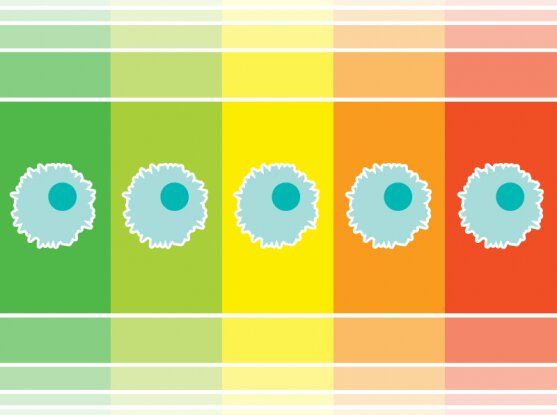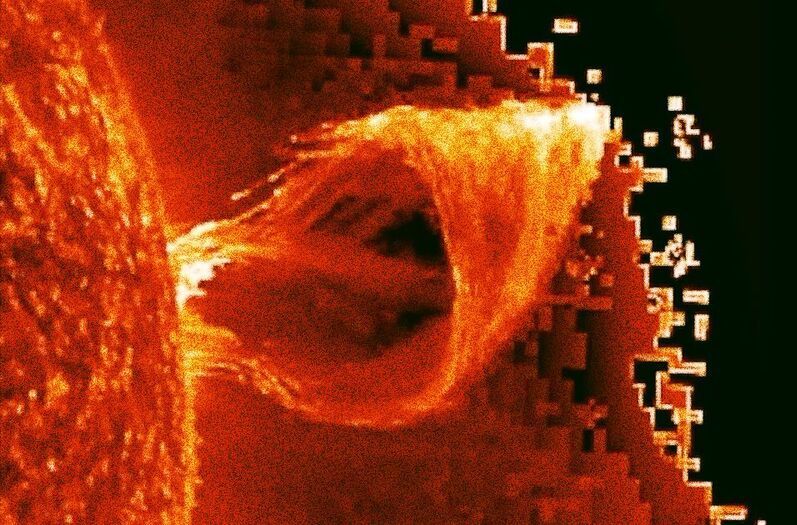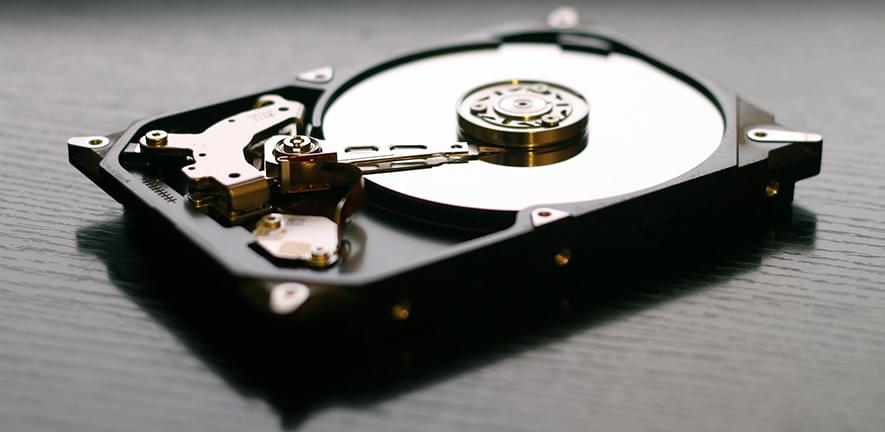B.1.1.28.2 variant.
India News: The National Institute of Virology, Pune, has detected a new Covid-19 variant — B.1.1.28.2 — through genome sequencing of samples from international t.

The world is entering a new era of warfare, with artificial intelligence taking center stage. AI is making militaries faster, smarter and more efficient. But if left unchecked, it threatens to destabilize the world.

“Siloscape”, the first malware to target Windows containers, breaks out of Kubernetes clusters to plant backdoors and raid nodes for credentials.
Windows containers have been victimized for over a year by the first known malware to target Windows containers. The ongoing campaign pierces Kubernetes clusters so as to plant backdoors, allowing attackers to steal data and user credentials, or even hijack an entire databases hosted in a cluster.
The malware was discovered by Unit 42 security researcher Daniel Prizmant. He dubbed it Siloscape, which he pronounces “Silo escape.” The malware pries open known vulnerabilities in web servers and databases so as to compromise Kubernetes nodes and to backdoor clusters.


New research suggests age-related changes in blood cell chromosomes are a marker of impaired immunity.
A person’s risk of severe infections increases dramatically as they grow older, but scientists do not yet understand how age might be linked to weakened immunity. Now, research shows that certain age-related changes in blood cells are associated with a higher risk of a range of severe infections including severe COVID-19, other pneumonias, and sepsis.
Researchers analyzed genetic and clinical data from nearly 800000 patients from around the world. They discovered that people with a specific type of acquired rearrangement in the chromosomes of their blood cells, called mosaic chromosomal alterations (mCAs), were nearly three times more likely to develop sepsis and two times more likely to get pneumonia than those without mCAs. These genetic changes accumulate in blood cells with age and often indicate a common condition in the elderly called clonal hematopoiesis.

The explosion contained elements of three different types of solar eruptions: Bubble-like coronal mass ejections, beam-like jets, and partial eruptions that collapse onto themselves. Those eruptions all happen independently of one another, making this hybrid the first of its kind to ever be spotted, according to CNET. NASA is referring to the explosion as a sort of “solar Rosetta Stone,” comparing it to the ancient slab that helped researchers decode Egyptian hieroglyphs, because picking apart the three different eruptions could help researchers finally understand the root causes for each and how they differ.
The 2016 explosion was too big to be a jet but too narrow to be a coronal mass ejection, according to a NASA press release. And when it finished, a partial eruption emerged from the same place just to bubble up and fall back onto itself. Seeing all three forms of eruption emerge in the same place and within the same hour suggested to NASA that all three are caused by the same mechanisms, according to the research, which was presented at Monday’s American Astronomical Society meeting and has been accepted for publication in Astrophysical Journal Letters.
“This event is a missing link where we can see all of these aspects of different types of eruptions in one neat little package,” NASA solar scientist and lead study author Emily Mason said in the release. “It drives home the point that these eruptions are caused by the same mechanism, just at different scales.”
Health, Equity, And Economic Growth — Dr. Helene Gayle, MD, MPH, President and CEO, The Chicago Community Trust.
Dr. Helene D. Gayle, MD, MPH, is President and CEO of The Chicago Community Trust (CCT), one of the nation’s oldest and largest community foundations, and under her leadership, CCT has adopted a new strategic focus on closing the racial and ethnic wealth gap in the Chicago region.
An expert on global development, humanitarian, and health issues, for almost a decade, Dr. Gayle was president and CEO of CARE, a leading international humanitarian organization, and prior to that spent 20 years with the U.S. Centers for Disease Control, working primarily on HIV/AIDS. She also worked at the Bill & Melinda Gates Foundation, directing programs on HIV/AIDS and other global health issues.
Dr. Gayle serves on public company and nonprofit boards, including The Coca-Cola Company, Organon, Palo Alto Networks, Brookings Institution, Center for Strategic and International Studies, New America, ONE Campaign, Federal Reserve Bank of Chicago, and Economic Club of Chicago. She is a member of the American Academy of Arts and Sciences, Council on Foreign Relations, American Public Health Association, National Academy of Medicine, National Medical Association, and American Academy of Pediatrics.
Dr. Gayle was awarded the Chicago Mayor’s Medal of Honor for her work on COVID relief and recovery for the city. Named one of Forbes’ “100 Most Powerful Women” and one of Non Profit Times’ “Power and Influence Top 50,” she has authored numerous articles on global and domestic public health issues, poverty alleviation, gender equality, and social justice.

“We’re trying to ice skate to where the puck is going,” Ellis said, adding that Relativity wants to be similarly disruptive to SpaceX, but in its own way. “What we keep hearing from customers is that they don’t want just a single launch company that is, frankly, the only quickly moving, disruptive provider.”
Powered by seven main engines, the Terran R vehicle will initially launch from Cape Canaveral Space Force Station in Florida. Relativity has set a goal to launch in 2024, and Ellis said the company has signed a binding contract for multiple launches with an “anchor customer” he declined to name. Relativity has not publicly released a price for a launch.
This small-scale humanoid is designed to do parkour over challenging terrains.
For a long time, having a bipedal robot that could walk on a flat surface without falling over (and that could also maybe occasionally climb stairs or something) was a really big deal. But we’re more or less past that now. Thanks to the talented folks at companies like Agility Robotics and Boston Dynamics, we now expect bipedal robots to meet or exceed actual human performance for at least a small subset of dynamic tasks. The next step seems to be to find ways of pushing the limits of human performance, which it turns out means acrobatics. We know that IHMC has been developing their own child-size acrobatic humanoid named Nadia, and now it sounds like researchers from Sangbae Kim’s lab at MIT are working on a new acrobatic robot of their own.
We’ve seen a variety of legged robots from MIT’s Biomimetic Robotics Lab, including Cheetah and HERMES. Recently, they’ve been doing a bunch of work with their spunky little Mini Cheetahs (developed with funding and support from Naver Labs), which are designed for some dynamic stuff like gait exploration and some low-key four-legged acrobatics.
In a paper recently posted to arXiv (to be presented at Humanoids 2020 in July), Matthew Chignoli, Donghyun Kim, Elijah Stanger-Jones, and Sangbae Kim describe “a new humanoid robot design, an actuator-aware kino-dynamic motion planner, and a landing controller as part of a practical system design for highly dynamic motion control of the humanoid robot.” So it’s not just the robot itself, but all of the software infrastructure necessary to get it to do what they want it to do.

Graphene can be used for ultra-high density hard disk drives (HDD), with up to a tenfold jump compared to current technologies, researchers at the Cambridge Graphene Center have shown.
The study, published in Nature Communications, was carried out in collaboration with teams at the University of Exeter, India, Switzerland, Singapore, and the US.
HDDs first appeared in the 1950s, but their use as storage devices in personal computers only took off from the mid-1980s. They have become ever smaller in size, and denser in terms of the number of stored bytes. While solid state drives are popular for mobile devices, HDDs continue to be used to store files in desktop computers, largely due to their favorable cost to produce and purchase.